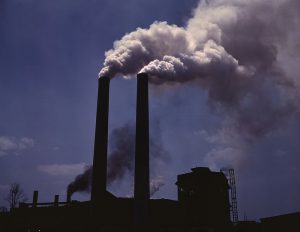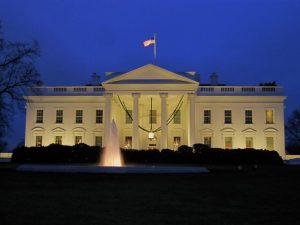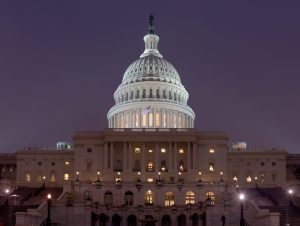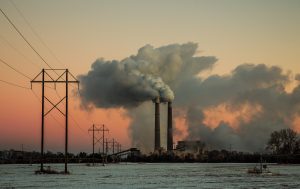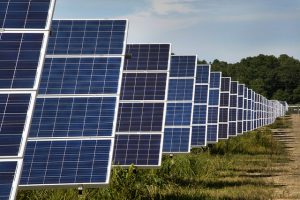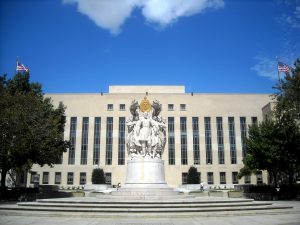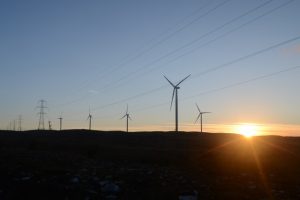587 item(s) were returned.
Visiting Scholar
American Enterprise Institute
When last we joined hands around the ourenergypolicy.org campfire, roasting s’mores and singing songs of camaraderie, we told tales of one particular monster of the dark, to wit, the Obama administration analysis of the social cost of carbon, perhaps the most dishonest exercise in political arithmetic ever produced by the federal bureaucracy. But this is the Beltway: No perfidy goes unrewarded. And so it is with the SCC, now tailor-made for the justification of rules utterly preposterous. Consider for example the Environmental Protection Agency efficiency rule for medium- and heavy trucks, part of the administration’s climate action plan; EPA has… [more]
View InsightAssociate Professor of Environmental Engineering
Rice University
President-elect Donald Trump has only vaguely defined his plans for energy policy, via his website and campaign statements and tweets. As a result, one can only speculate what changes to expect from Trump energy policies. Nevertheless, a recent report by S&P Global Platts aimed to predict how electricity will be generated under Trump energy policies. The analysis assumed Trump would allow subsidies for renewable energy to continue their scheduled scale down through 2020, and enact no new policies to support wind or solar. This is consistent with recent reporting indicating that Trump does not plan to act against renewable energy… [more]
View InsightWith the race for President ending this week, one concern expressed by some has been the lack of any substantive discussion about US energy policy. While Mr. Trump has often mentioned reviving the coal industry as part of a larger emphasis on policies that leverage the country’s domestic energy resources, Secretary Clinton’s campaign has said her policies will look to grow clean energy resources like wind and solar energy. But after three debates, many believe the country needs more information on this topic from both candidates for President. A recent debate (video here) however between campaign advisors for Mr. Trump… [more]
View InsightDirector, Midwest Clean Energy
Environmental Defense Fund
In a long-awaited decision, Ohio regulators with the Public Utilities Commission (PUCO) approved a $600 million electricity rate plan for Ohio utilities provider, FirstEnergy. FirstEnergy has been struggling financially since a 2011 merger with Allegheny Energy. The utility paid a premium to acquire Allegheny’s coal dependency just as the cost of natural gas began its rapid decline. The PUCO decision was in response to FirstEnergy’s $4 billion bailout plan, which the Federal Energy Regulatory Commission (FERC) rejected after determining the bailout equated to an illegal subsidy that distorted competitive electricity markets. In order to avoid FERC jurisdiction, FirstEnergy revised its… [more]
View InsightPresident
Micro-Utilities, Inc.
Twenty-nine states have renewable energy mandates. California’s mandate calls for 33% renewable energy by 2020 while New York State mandates 50% of its electricity be renewable by 2030. It is one thing to set energy or electricity mandates and quite another to achieve them. New York is quite fortunate; today 26% of its electricity comes from renewable electricity sources. However, large hydroelectric facilities today provide 80% of NY’s renewable electricity and, unless more hydropower is imported from Canada, an expanded contribution from large hydropower seems unlikely. So to meet this 50% mandate, solar and wind which today produce 5.2% of… [more]
View InsightThe International Civil Aviation Organization (ICAO) finalized an agreement to cap the aviation industry’s CO2 emissions at 2020 levels. Due to the cross-border nature of aviation, this sector, which is responsible for 2 percent of all GHG emissions globally, was excluded from the Paris Agreement in 2015. Although the agreement’s mandatory phase begins in 2027, more than 60 countries will voluntarily participate in the Carbon Offsetting and Reduction Scheme for International Aviation (CORSIA) beginning in 2021. CORSIA is a market-based measure capping emissions at 2020 levels. Airlines that exceed the emissions cap can offset their excess CO2 in two ways.… [more]
View InsightLast week, the latest chapter in the Clean Power Plan saga unfolded before an en banc hearing at the D.C. Circuit Court of Appeals. Petitioners argued the Environmental Protection Agency (EPA) overstepped its congressional authority under the Clean Air Act. A central issue before the court was whether the agency exceeded its authority under Section 111(d) by designing a scheme that regulates “beyond the existing source’s fence line” – outside the four walls of the utility. Section 111(d) requires EPA to establish emission guidelines that reflect the best system of emission reductions (BSER) that have been adequately demonstrated. Petitioners, led by… [more]
View InsightAssociate Professor, Department of Agricultural and Resource Economics
University of California, Berkeley
California is experiencing what has been dubbed the worst epidemic of tree mortality in the state’s modern history, with the death of an estimated 66 million trees since 2010. There seems to be widespread – but not unanimous – agreement that leaving close to 40 million dry tons of wood in the forest will increase wildfire risk to unacceptable levels. A tree-mortality task force is working to safely remove the dying trees by using the tree services where some of which can be harvested for timber. But given the current trajectory, lots of wood will be burned on-site. This begs… [more]
View InsightEditor / Researcher
OurFiniteWorld.com
Many people are hoping for wind and solar PV to transform grid electricity in a favorable way. Is this really possible? Is it really feasible for intermittent renewables to generate a large share of grid electricity? The answer increasingly looks as if it is, “No, the costs are too great, and the return on investment would be way too low.” We are already encountering major grid problems, even with low penetrations of intermittent renewable electricity, which in the U.S. was 5.4% of 2015 electricity consumption. In fact, I have come to the rather astounding conclusion that even if wind turbines… [more]
View InsightThe Forum for Climate Engineering Assessment’s (FCEA) overarching objective is to assess the social, ethical, political, and legal implications of emerging technologies that fall under the broad rubric of climate engineering (sometimes referred to as “climate geoengineering”). We produce high-quality and policy-relevant research and commentary, and work in a variety of ways ensure that the climate engineering conversation maintains a focus on issues of justice, equity, agency, and inclusion.
View Insight